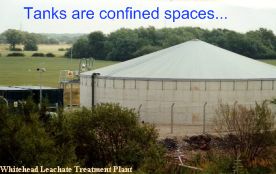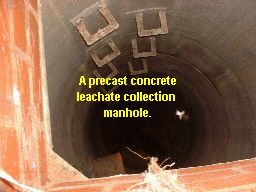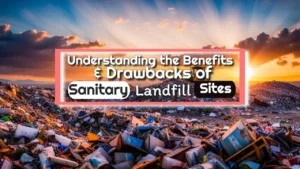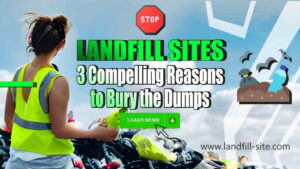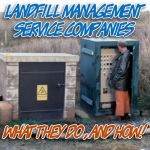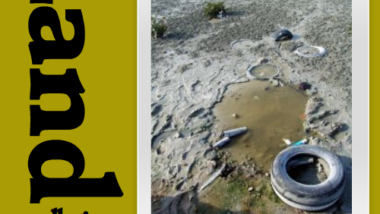Confined Spaces Definitions (United Kingdom H&S Regulations)
There are two commonly used definitions:-
The Confined Spaces Regulations 1997
(2) In these Regulations, unless the context otherwise requires –
“confined space” means any place, including any chamber, tank, vat, silo, pit, trench, pipe, sewer, flue, well or other similar space in which, by virtue of its enclosed nature, there arises a reasonably foreseeable specified risk;
HSE Web Site
A confined space is a place which is substantially enclosed (though not always entirely), and where serious injury can occur from hazardous substances or conditions within the space or nearby (e.g. lack of oxygen).
General Discussion of Confined Spaces Safety
Confined spaces are typically difficult to enter and exit, especially in an emergency. They may also contain hazardous atmospheres and other safety hazards as described below that could cause serious physical injury or death. They are often narrow and constricting preventing easy access by rescuers.
They are usually also either unlit or poorly lit so rescuers must provide their own light source. Confined spaces when dangerous are filled with silent, invisible, imperceptible, and potentially deadly hazards. So, make sure that you identify the confined spaces on your site before there is an incident, or worse still an accident.
The first action is to do a risk assessment and list the procedures, or if no procedures exist already, write safe procedures which must be followed when it is necessary to enter these spaces.
Gas monitors employing catalytic diffusion sensors can be effective in determining hazard potential. Gases that are lighter than air may also be trapped within an enclosed type confined space, especially those with access from the bottom or side.
Your company should also monitor and audit employee compliance with policies, procedures, and regulations, and report non-compliant conditions to supervisory staff for correction. It si important that at least someone in any organisation and especially at a landfill site writes, publishes, and up-dates generic safety policies and procedures.
Any previous monitoring results should probably be made available to all staff who may have to enter any confined space. Monitoring instruments must be pre-set to analyse air samples and alarm at a predetermined concentration level, usually well below the LEL (lower explosive limit). The worker is then provided with advance warning concerning the potential hazard by the alarm.
It is possible that some confined spaces will be assessed to be risk free, in which case no special procedures may be necessary. Within many organisations they define “permit-required” confined spaces as confined spaces that have potentially hazardous atmospheres or other serious hazards. 
All staff and operatives are given training in the needed procedures. This training provides information on the personnel who are permitted to make entry, and this will depend usually on their attending required courses such as as Confined Spaces and Use of Breathing Apparatus training courses. It is essential that all staff using such equipment are fully trained in the types and proper use of mechanical ventilation equipment that may required to safely enter and work in confined spaces with potentially hazardous atmospheres.
Employees must exit immediately if a hazardous atmosphere is detectedduring entry, and the space must be evaluated to determine how the hazardous atmosphere developed.
If there is any question about the safety of a space or you cannot determine that conditions are safe to enter ANY space, you would normally be required to contact your supervisor.
It may be appropriate that rescue procedures are defined within the Safe Working Protocols. If so, these should be practised frequently so there is a high level of proficiency.
Employers should keep records of all confined spaces training including refresher courses attended by their employees.
Rescues should, of course, never be attempted without a proper rescue plan and appropriate safety equipment, such as self-contained breathing apparatus. Rescuers themselves must be trained in and follow established emergency procedures and use appropriate equipment and techniques ( respiratory protection, lifelines, standby persons, etc).
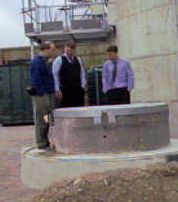 It seems obvious to say this but in the heat of the moment stranger things have happened. Steps for safe rescue should be included in all confined space entry procedures, and the necessary equipment must be available at all times where stipulated in procedures.
It seems obvious to say this but in the heat of the moment stranger things have happened. Steps for safe rescue should be included in all confined space entry procedures, and the necessary equipment must be available at all times where stipulated in procedures.
Assessment upon which a safe system of work is to be based must be carried out by those competent to do so. Assessments for individual confined spaces would normally be written as separate documents. However, where two or more confined spaces are similar in construction and have the same hazards, the assessment for each specific confined space may be recorded in a single document.
It has been suggested that death occurs in 8 minutes at 6 to 8 percent oxygen, however recovery is possible after 4 to 5 minutes if oxygen is restored. These values are approximate and may vary greatly depending on an individual’s health, physical activity and the specific working environment that they encounter.
Deaths in confined spaces are always distressing, particularly when there are well intentioned but reckless attempts at rescue, with devastation for families and sometimes the complete collapse of a small business.
Although waste organisations and contractors generally are well trained and practised in these health and safety systems, there is always a need for extreme vigilance.
Once you have complied with the Confined Spaces Regulations did you know that if there is a Dangerous substance present, including a risk of explosion you will also need to comply with the ATEX Directive and DSEA Regulations.
Understanding the Benefits and Drawbacks of Sanitary Landfill Sites
In this article, you will find out about the advantages and disadvantages of sanitary landfills. Deciding on the best way to handle rubbish, is a common challenge, especially in developing nations. Sanitary landfills offer one solution, but they come with pros and cons. This article will help you understand these landfill sites better, including their benefits and drawbacks. Stay […]
Landfill Sites – 3 Compelling Reasons to Bury the Use of Dumps
Landfill Sites are not sustainable, and here are 3 compelling reasons to bury the idea that we continue to use landfills (dumps) for municipal waste beyond the next 10 years. All waste has to be disposed of in a safe manner. If not it is a major health problem in densely populated urban areas, second […]
Landfill Management Services Companies – The Experts Paid to Look After Old Tips
Landfill Management Services Companies, are independent contracting organizations that make a business out of looking after landfills. They employ professionals who are both practical technicians skilled in monitoring landfills, and environmental management experts able to take action where it is needed, installing, servicing and maintaining the equipment on landfills which protects the environment around their perimeters. […]
